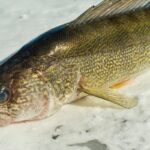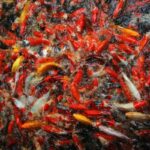The northern pike is one of the most fantastic freshwater predators on earth. They’re a fast, powerful, and ruthless predator common across much of North America, northern Europe, and northern Asia.
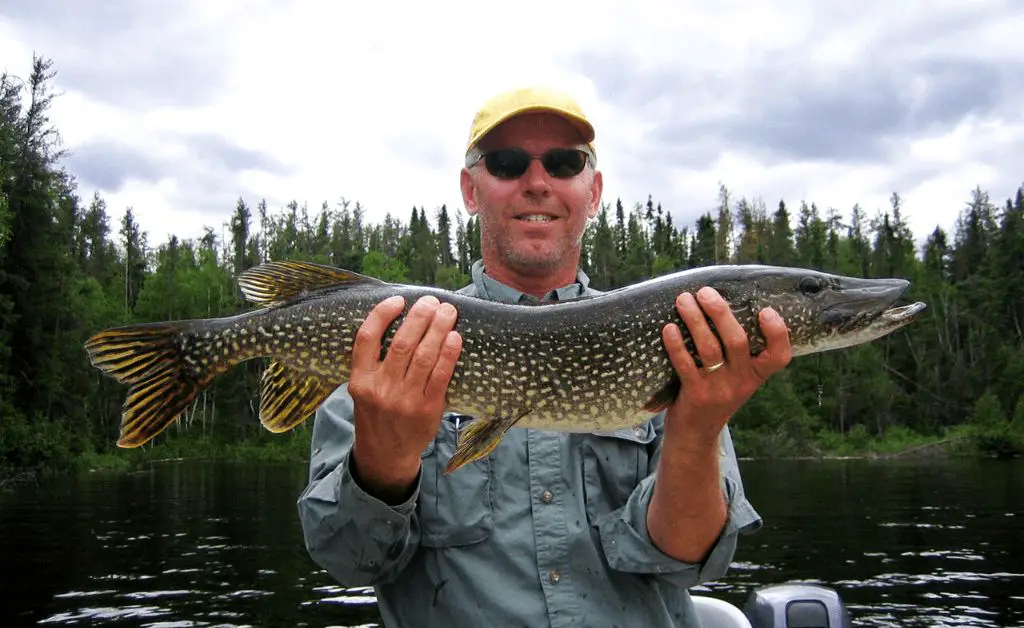
These fish are a ton of fun to catch, and it’s easy to see why once you get your first pike up to the surface. Their long serpentine bodies, pointed faces, and razor-sharp teeth are extremely powerful. While pike is plentiful throughout much of the world, many anglers are unsure whether these fish are edible.
Not only can you eat northern pike, but it is incredibly delicious when prepared well. Like most fish, with proper preparation and a good recipe, pike can be super tasty. In fact, it’s a delicacy in many cultures of the world.
Today, we’re going to look closely at this iconic gamefish that’s sought after throughout the world by freshwater anglers. You will now know precisely how to prepare an excellent pike dish.
Are Northern Pike Good To Eat?
Northern pike might look intimidating initially, but these fish can be delicious. Many fish eaters are put off by the presence of bones in the filets or the fish’s slimy, somewhat primordial look. Still, pike offers semi-firm filets with a delightful and relatively mild flavor.
All you need to do is take the time to prepare the fish and remove all its bones properly. You’ll be rewarded with a delicious meal that will please anyone who likes fish.
What Does Northern Pike Taste Like?
Pike is similar to most freshwater fish, offering semi-firm filets that are yellowish to pearl white. The taste is mild, although it’s slightly fishier than other cold climate freshwater fish.
Many anglers find that while it runs counterintuitive to everything you know about freshness, freezing the filets before preparation helps impart a sweeter and less fishy taste to the filets.
The size of a fish can also profoundly impact how the meat tastes. Larger pike that have been around longer tend to have a more fishy taste than smaller ones. Fish are a product of their environment. So, the longer they’re swimming around in their lake or stream, the more that habitat can color the flavor of the fish.
What Size Northern Pike Is Best To Eat?
The best-eating pike will be the smaller keeper-sized fish. Usually, that size is around 18-24 inches. These smaller fish offer the most tender and mild filets, and they’re preferred by virtually all anglers who eat pike.
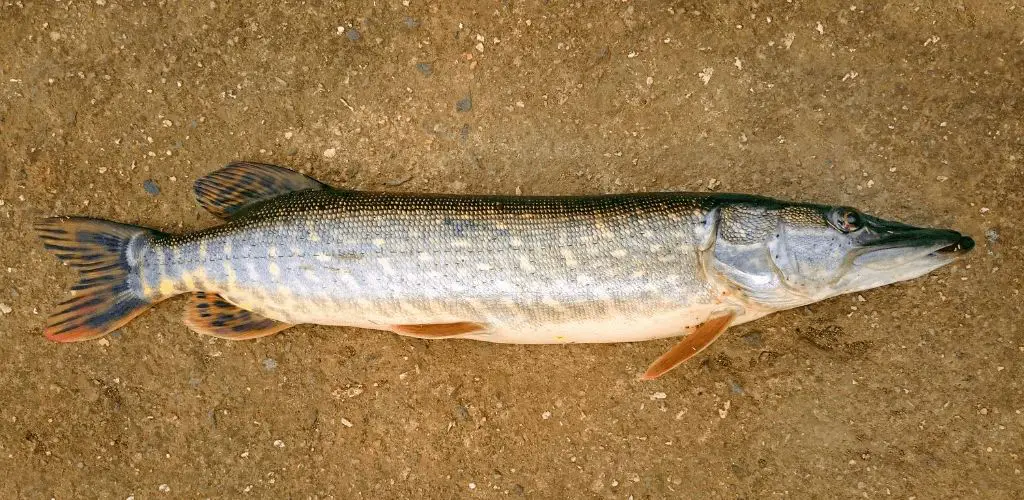
The best practice is to keep a few of the smaller fish for the table and release large breeders back to their habitat. In this way, they can continue to produce more fish. Larger fish are more valuable to their ecosystem and tend to taste fishier. They’re also more likely to hold onto environmental contaminants than smaller, younger fish.
Is It Safe To Eat Northern Pike?
Absolutely. Pike has been a popular food source worldwide for thousands of years. Virtually all of the indigenous peoples of North America cited pike as a primary food source, as the fish is abundant in most freshwater environments that experience cold winters.
In France, roast pike is considered a delicacy. This fact holds true in most Scandinavian countries and throughout northern Europe.
Pike gets somewhat of a bad rap, partially because of their look and slimy exterior. Still, the fish is delicious, safe to eat, and considered a treat in many cultures.
Is Northern Pike Good for You?
Like most fish, pike is an intelligent choice that you can feel good about eating. It’s loaded with omega 3s, vitamins and minerals, healthy fats, and protein. All of these nutrients make it an excellent choice as a main dish.
Like most other fish, you’ll want to avoid eating the larger breeder-size fish. They are less tasty, and environmental contaminants often taint their meat.
How To Prepare Northern Pike
The key to a delicious pike dish is to take care in the preparation and ensure that the fish is deboned correctly. Thankfully, there are several ways to filet a pike and produce beautiful boneless filets.
My favorite method allows you to get five boneless filets from each fish.
Start by preparing your workspace. Cover your filet table in newspaper or an old towel, and ensure that you have a sharp knife to filet the fish.
Place the fish belly down on your filet table. Pike have three bone systems that run vertically down the center and on each side of the fish. But, these bones don’t extend to the top of the fish. The bones stop about 1 inch from the top, which allows you to get a nice thick filet from that area.

Begin by making a cut below the head of the fish. Continue cutting until you feel the bones, usually about 1” deep. Turn your knife at a 45-degree angle and begin to cut parallel to the bones. Using your knife as a guide, you should feel the tops of the bones as you run your knife down towards the tail. As you begin to reach the tail fin, angle your knife upward towards the top of the fish, and finish your cut at the base of the tail fin.
Once you’ve made your first filet, it’s easy to look down on the fish and see where the bones are located. Locate the end of the bones on the first side, and begin making an incision by gently running your knife against the edge of the bones. Once you’ve started the incision, run the knife down towards the tail of the fish, once more using the blade as a guide to feel the end of the bones.
Complete your cut, ending at the tail fin, just as you did with the top filet. Repeat this same process to remove the filet from the opposite side of the fish.
After you’ve removed those three filets, you’ve captured the lion’s share of the meat from the fish. You can also remove two small filets from the tail. Place the fish on its side and cut down towards the center of the fish, just below its anus. Turn your knife at a 45-degree angle and cut towards the tail to separate the first petite filet. Flip the fish over and repeat the process to capture the second petite filet.
Finally, grip the end of each filet, and cut down just below your fingertips. Turn the knife at a 45-degree angle as you reach the skin, and run the knife along the skin side to remove it. Repeat this process with each filet, and rinse them thoroughly in fresh water before you begin cooking your dish.
How To Cook Northern Pike
When it comes to cooking pike, you can try hundreds of delicious dishes. This fish is versatile. You can enjoy it fried, baked, or broiled, added to soups and stews, or ground and made into fish balls or patties.

Throughout Europe, smoked pike and pickled pike are pretty popular. To the uninitiated, these preparations can be an acquired taste. Still, tons of more accessible dishes taste delicious while allowing the flavor of the delightful northern pike to shine through.
Final Word
While many anglers turn their nose at the humble northern pike, it’s a tasty fish you can prepare in tons of delightful ways.
To some, these fish may look intimidating. It may also take a bit of extra care to produce when compared to other gamefish. But anglers willing to go the extra mile to prepare it are rewarded with a truly delicious meal.
- Do You Need An Indicator For Nymph Fishing? - November 16, 2023
- Fishing Safety Tips For Families - September 25, 2023
- What Is The Best Time To Night Fish At A Lake? - September 18, 2023


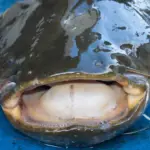
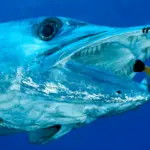
![Does Bass Have Teeth? [How to Handle Bass Safely] does-bass-have-teeth](https://irvinelake.net/wp-content/uploads/2022/09/does-bass-have-teeth-150x150.png)

